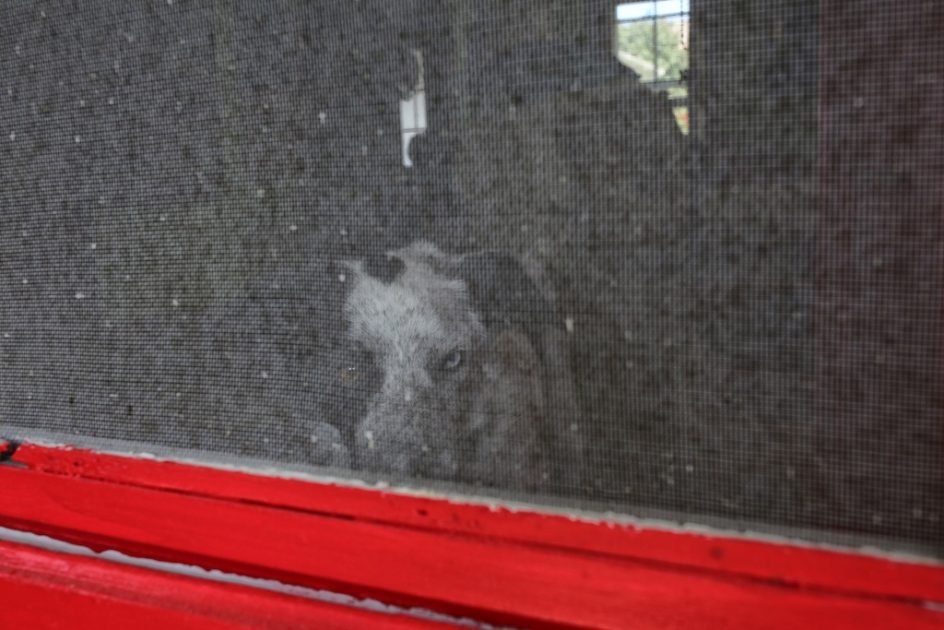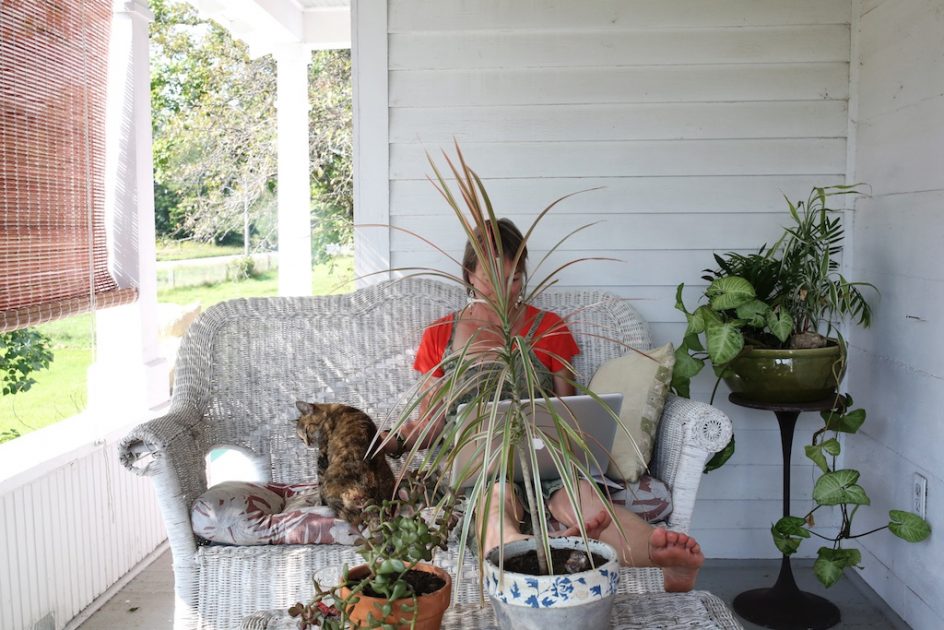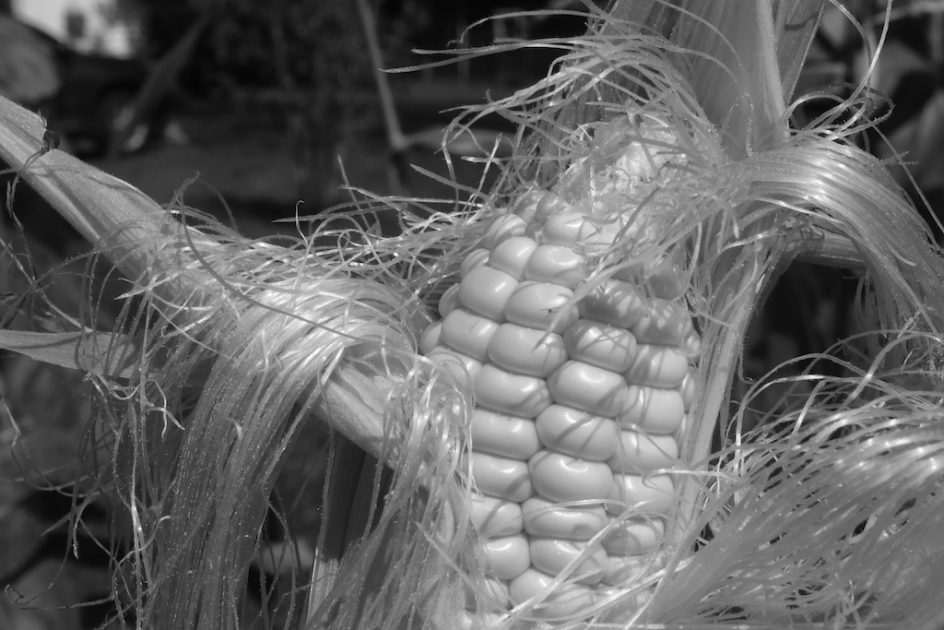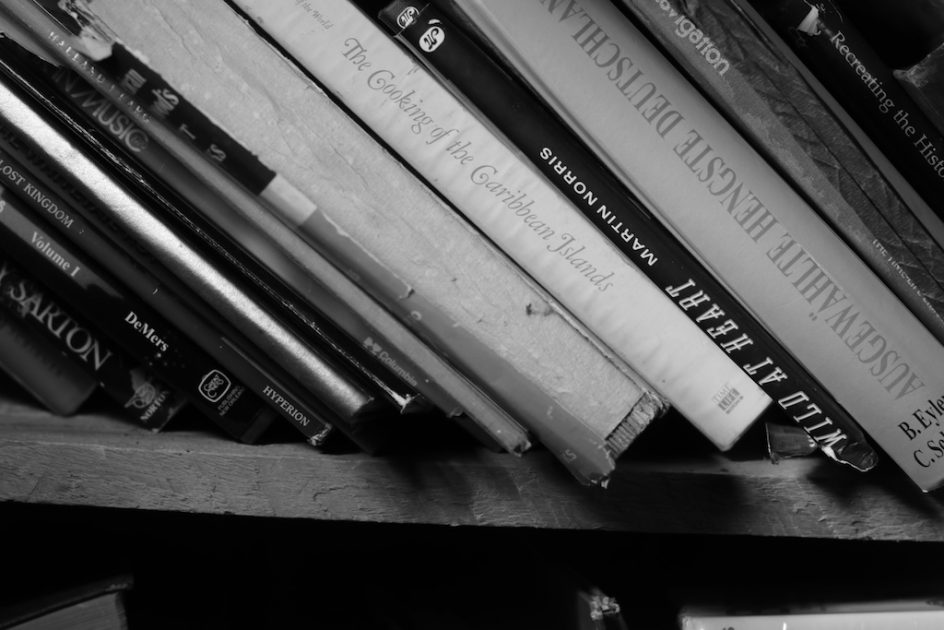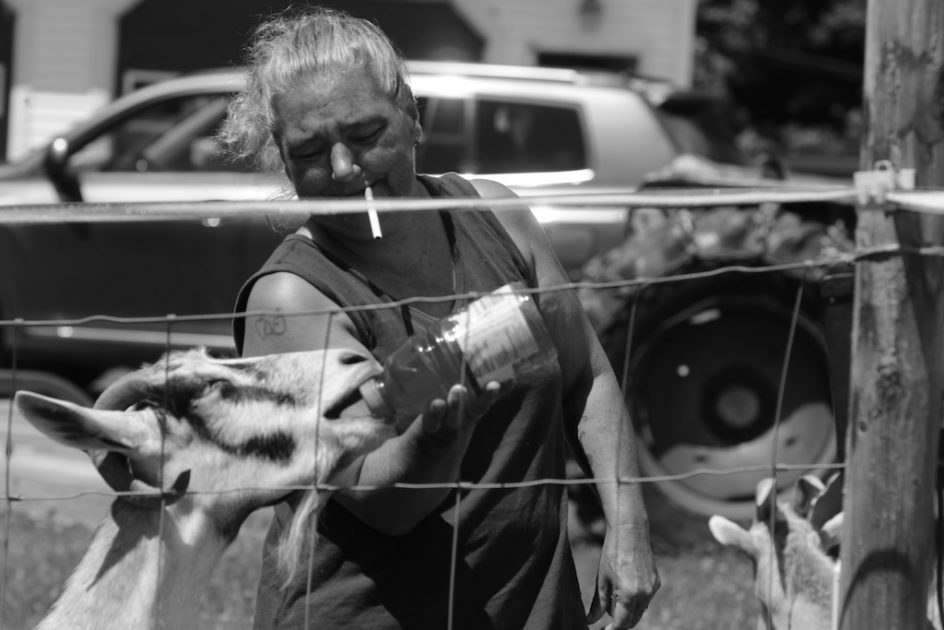
Maria and I finished framing and matting all but one of the 25 portraits that will be in my portrait show at the Round House Cafe, it is called “Cambridge People: Portraits Of The Unseen.” The portraits capture a wide range of people in my small but individualistic town.
In the sense that rural life has largely been abandoned by government bureaucrats and economists, I wanted to capture some of the faces of the people who live and work here, who make up our community.
Above is one of my favorite photo subjects, Treasure Wilkinson is a transplant from Rhode Island, she rescues animals, raises goats and works on her dreamcatchers and other Native-American objects.
She almost always has a cigarette dangling from her lips (she claims to only smoke a half-pack or so a day) and on hot days, she shares her gatorade with the goats. She also has great tattoos. Treasure is our friend, she has a great heart and generous spirit and adores every animal she sees.
My portrait show – the first portrait work I have ever done – will be hung in a week or so, there will be an opening reception at the Round House Cafe, 1 Washington Street, Cambridge, N.Y., 12816, Sunday, September 18, 2 to 4 p.m. Most of the subjects and their families will be on hand.
The show will be up for five or six weeks and in the Round House during our October Open House At Bedlam Farm, which will be held the Saturday and Sunday of Columbus Day Weekend. Details on Maria’s site.
Maria, who has a master degree in the arts, and who worked in a frame shop for seven years while she went to school, did the matting and the framing herself (I was permitted to help after washing my hands). I am so lucky to have her.
Her work helped us to keep the costs down – it still cost more than $1,000 to print the photos and buy mattes and frames, but I hope to sell the portraits for $150, I do not like the idea of photo shows were the pictures cost $400 and up. In any case, this is a project of the heart, I don’t expect to make money.
It is really a kind of love letter to my town, which has given me a powerful sense of community. The portrait show was inspired by Kelly Nolan, whose smile and brave encounter with the camera inspired me to do more. She is one of the unsung heroes of the town.
I loved doing the portrait work and will keep at it. There are two color photos, and the rest are black and white, taken with my monochrome camera and my used Zeiss lens, which was a great purchase.
I set out to find good and hard-working people who represent different elements of our community, and beyond that, of the faces of rural America. I’m excited about it and proud of the photos. I got a tingle up the spine seeing them framed.

